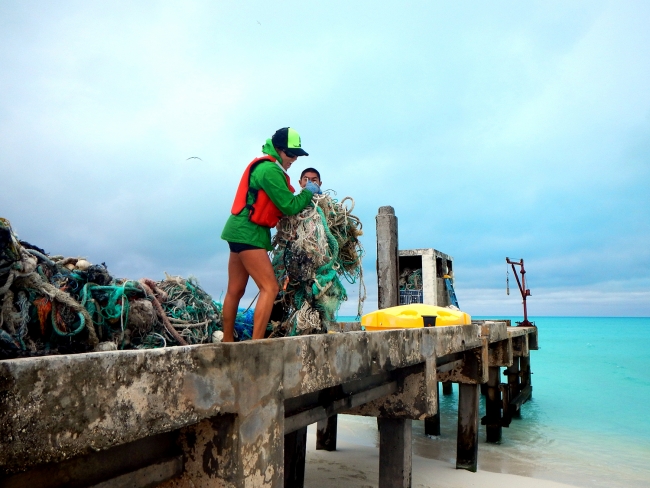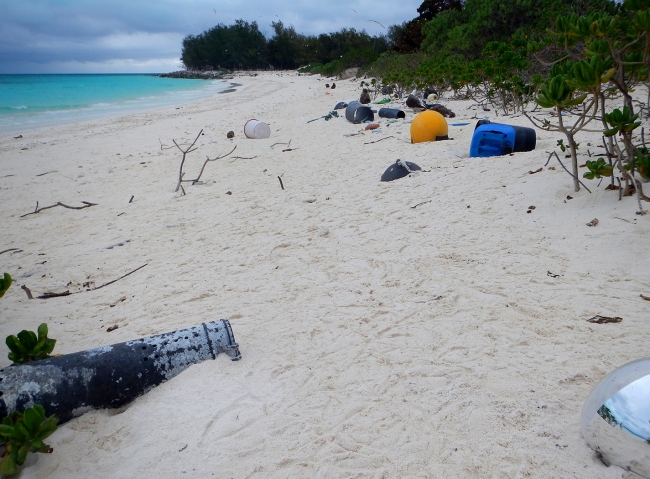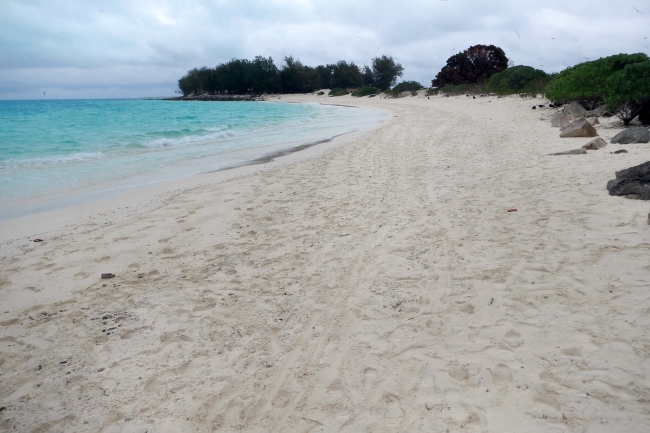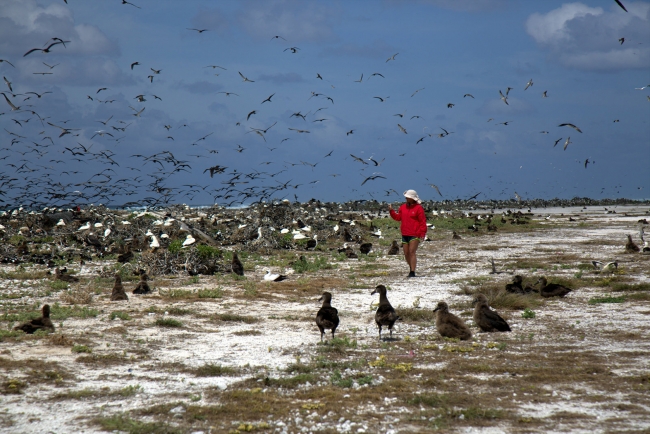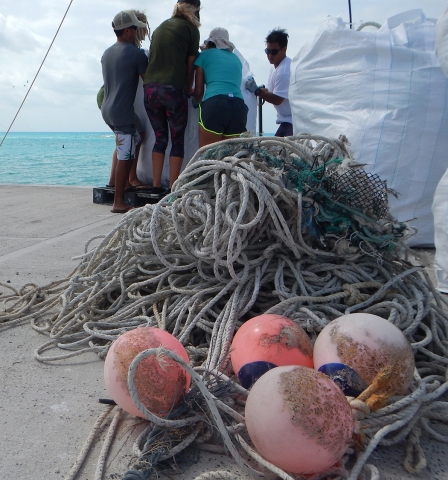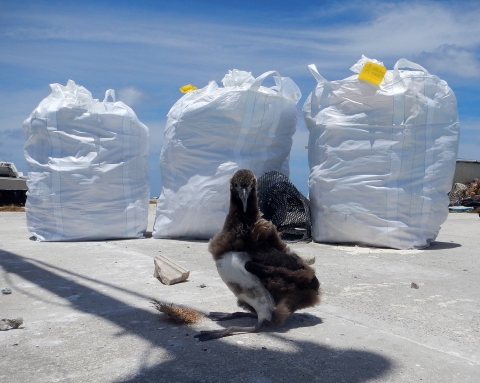By: Liat Portner, Amanda Dillon, and Kristen Kelly, Guest Bloggers and Scientists with the NOAA Coral Reef Ecosystem Program
The NOAA Pacific Islands Fisheries Science Center (PIFSC) Coral Reef Ecosystem Program’s (CREP) removal mission in the Papahānaumokuākea Marine National Monument in the Northwestern Hawaiian Islands is completed! For more on this effort, check us out on Facebook, Twitter, and Instagram, and take a look at CREP’s interactive daily map for details on daily activities.
Our team of ten embarked on the NOAA ship Hiʻialakai to begin our journey down the Northwestern Hawaiian Island chain. We began with the oldest and most northwestern of the Hawaiian Archipelago, Kure Atoll.
Landing on the shores of Kure, our team was greeted by the State of Hawaii’s Department of Land and Natural Resources field crew, who remove debris throughout their field season. Kure Atoll State Wildlife Sanctuary is home to 18 different species of seabirds, the threatened green sea turtle, and the endangered Hawaiian monk seal. Even with blustery winds and a chilly drizzle, we were in awe of this remote habitat and impressed with all the work being done to restore it for the wildlife.
The next day, a quick trip to the pier at Midway Atoll National Wildlife Refuge provided a few hours to sweep clean the beaches of Sand Island. We discovered an Albatross chick with an oyster spacer stuck on its beak that we carefully removed—a reminder that debris of any size can be harmful.
Next up, Pearl and Hermes Atoll! The bright waters of the lagoon seemed to glow in the sunlight as we navigated the vast maze of reefs. A giant stingray swooped by under the boat and spinner dolphins leapt off the bow.
While picking up plastic debris along the shore, we discovered a wedge-tailed shearwater bird that had burrowed into an eel trap. Liat carefully freed it but found four more birds stuck in the trap; unfortunately, all had already died—another first-hand experience of the deadly impact debris can have on wildlife.
Continuing on, we reached Lisianski, an island of fine, white, sandy shorelines surrounded by shallow reefs. Splitting into two teams, we stormed the shores—digging out nets buried in beach slopes and snarled in Heliotrope trees—to remove a total 2,500 pounds of derelict fishing nets. Our crew also jumped in to assist the NOAA Hawaiian Monk Seal Research Program to disentangle a large adult male seal that had a line of fishing net caught around his neck.
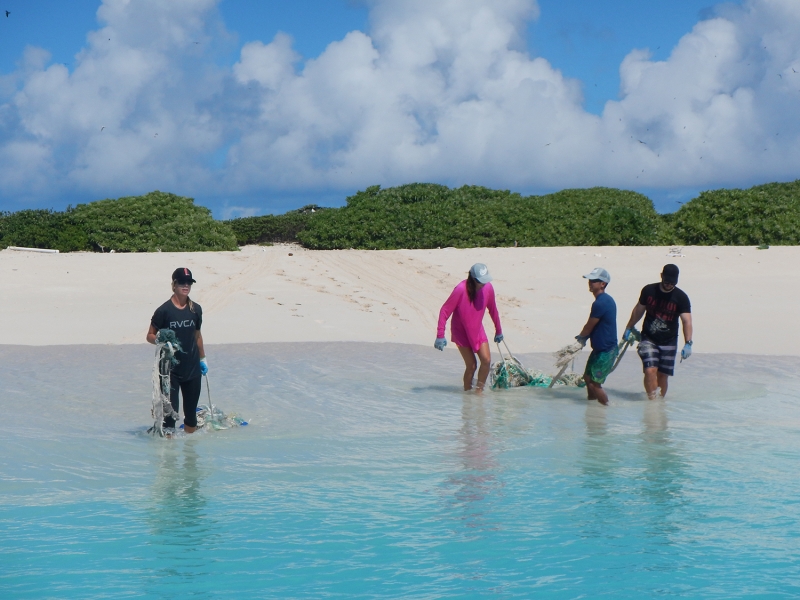
A day later, we arrived at Laysan Island, but high winds and swell converged to create conditions too dangerous for our light Zodiac boats. Fortunately, the NOAA monk seal team on the island is equipped with super sacks to collect debris during the season. Until next year, Laysan!
Last stop, French Frigate Shoals. Tern Island, though initially constructed as a runway, is now dominated by thousands of sooty terns. On approach to the island, the sound of bird calls gets louder and louder until it is a constant cacophony. We spent the day dodging bird nests and working to collect debris and nets.
In the last days of our mission, transiting back to our homes, we are left with thoughts of the work we just accomplished. The feat of removing more than 20,000 pounds of marine debris does not outweigh the fact that there is always more out there, being carried by the waves and winds to these distant shores. Although that thought can weigh us down, knowing that there are now 20,000 less pounds of debris in this beautiful place because of us reminds us of the power we have to be part of the solution, and makes us smile.

